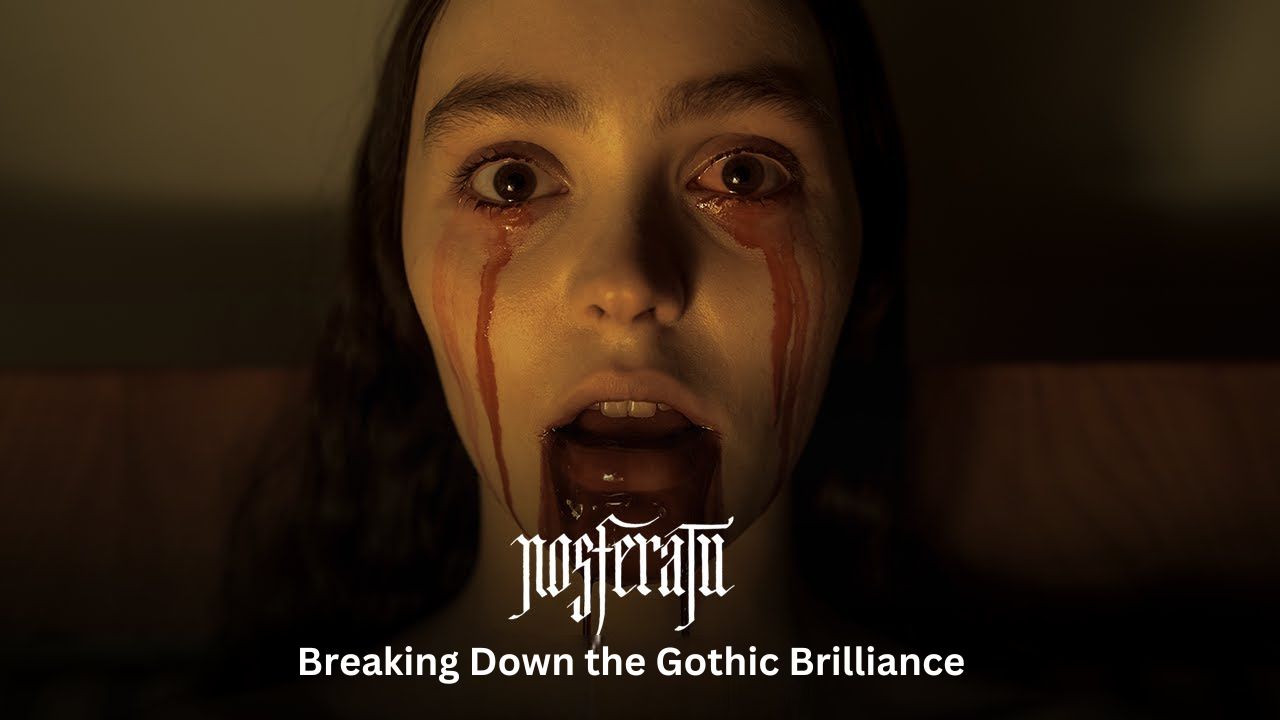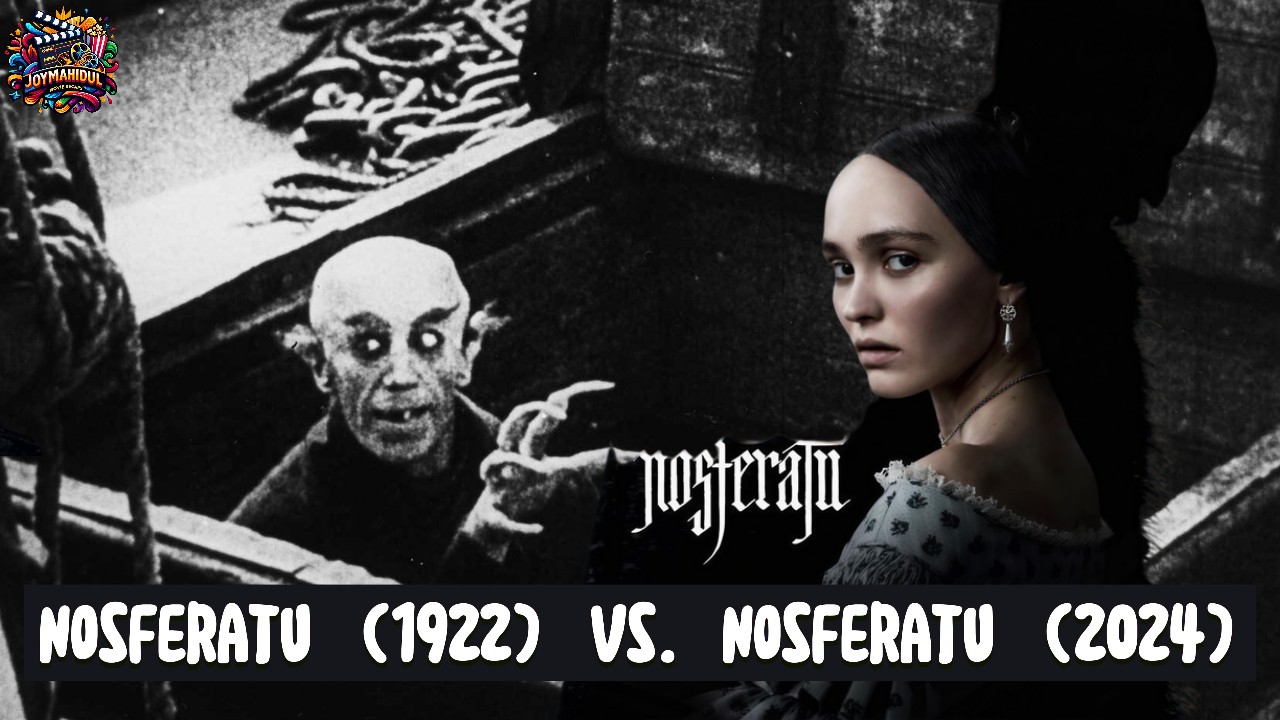Unmask the terror of Nosferatu (2024)—a haunting reimagining of the classic vampire tale that will leave you spellbound.
Introduction
Director Robert Eggers’ new version of Nosferatu is a great horror film, filled with shadows, blood, decay, and nightmares. This take on F.W. Murnau’s 1922 silent film keeps the spooky mood of the original while showing a brave, modern style. Eggers, known for his attention to historical detail and strong visuals, combines fear and terror into a powerful story. At its heart, Nosferatu is about the struggle between humanity and dark forces. Eggers pays close attention to details, turning a well-known story into an emotional trip through fear, sadness, and strength. The film’s beautiful images and deep atmosphere make it unique, drawing viewers into a world where light fights dark and life hangs by a thread.
Starring Lily-Rose Depp and Bill Skarsgård, this movie explores love, sacrifice, and the strange nature of living forever. Eggers mixes classic horror with fresh storytelling, making Nosferatu a film that goes beyond its genre, grabbing the audience’s attention with its style and strong emotions.
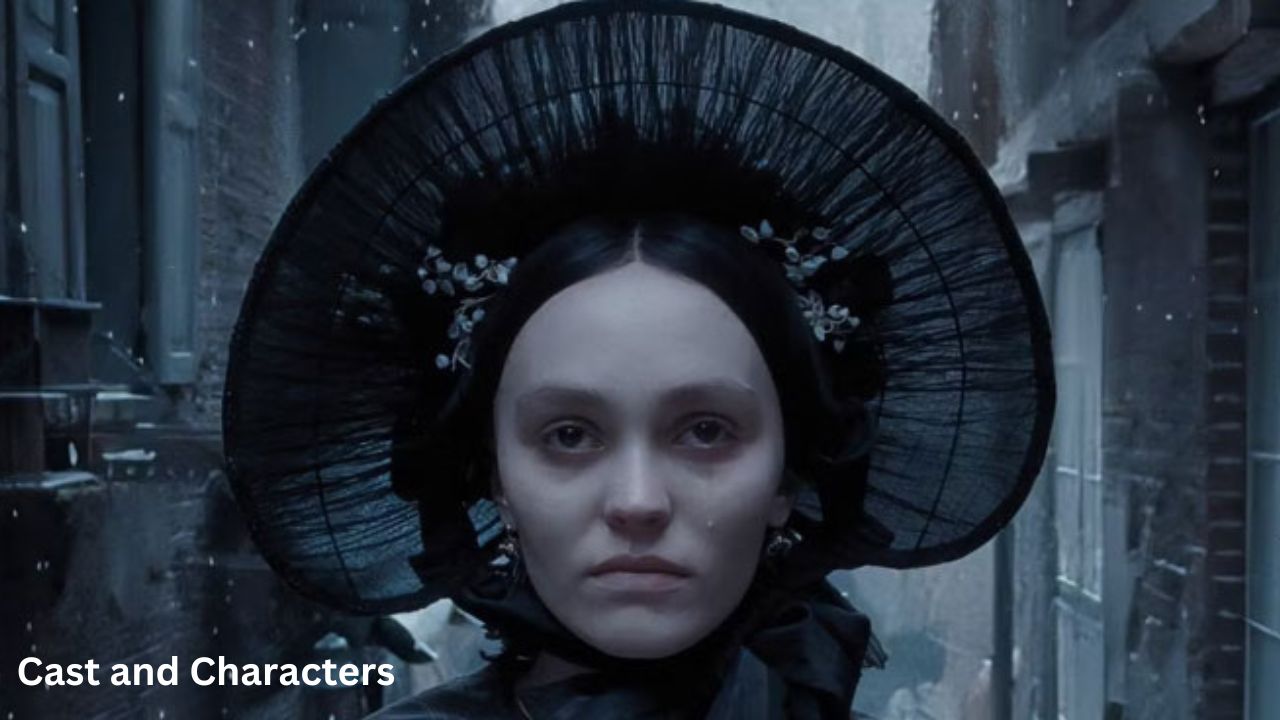
Cast and Characters
- Bill Skarsgård as Count Orlok: Skarsgård vanishes into the role of the sinister vampire, cloaked in prosthetics that amplify his eerie presence. His chilling portrayal blends menace with mystique, making Orlok an unforgettable horror figure.
- Lily-Rose Depp as Ellen Hutter: Depp delivers a standout performance as the tormented Ellen, anchoring the film with emotional depth. Her portrayal of Ellen’s psychological and supernatural struggles is both haunting and heartbreaking, capturing the character’s resilience amidst terror.
- Nicholas Hoult as Thomas Hutter: Hoult brings warmth and sincerity to the role of Thomas, Ellen’s devoted husband. His performance captures the character’s loving nature and naivety, making his journey into Orlok’s domain all the more harrowing.
- Willem Dafoe as Prof. Albin Eberhart Von Franz: Dafoe infuses the film with a sense of mysticism, portraying a disgraced academic who grasps the dark forces at play. His commanding presence adds depth and intrigue to the story.
The cast as a whole elevates Nosferatu (2024), with their performances weaving a rich tapestry of dread, passion, and humanity that brings this gothic tale to life.
Nosferatu (2024) Full Movie Plot
As a young girl, Ellen wishes for a spirit to bring her love but is instead attacked by a frightening vision, causing her to have a seizure. Fast forward to 1838, Ellen lives with her husband, Thomas Hutter, in Wisborg, Germany. Thomas, an estate agent, wants to impress his boss, Herr Knock, and agrees to sell an old castle to the mysterious Count Orlok. What Thomas doesn’t know is that Knock has made a dark deal with Orlok. Ellen has scary dreams, including one where Death is her bridegroom, but Thomas leaves for Orlok’s castle in the Carpathian mountains, leaving her with his friend, Friedrich Harding.
In Transylvania, locals warn Thomas about Orlok. He sees them treating a corpse they insist is a vampire. Drawn by a strange force, Thomas reaches Orlok’s castle. The eager count looks over the sale documents and takes Thomas’ locket when he sees Ellen’s picture. Orlok’s true nature shows when he holds Thomas down and feeds on him after Thomas gets hurt. Thomas tries to escape and kill Orlok but runs away, jumping into a river to survive. He is healed by an Orthodox church and rushes back to Wisborg, knowing Orlok is coming.
Meanwhile, Ellen has seizures and sleepwalking, which Dr. Wilhelm Sievers thinks is from too much blood. Sievers, eager for answers, asks his old teacher, Von Franz, a scientist turned occultist. Von Franz says Orlok is the Nosferatu, a demon connected to Ellen’s worsening health. Despite Friedrich’s doubts, Ellen’s visions of Orlok’s arrival turn out to be true. Orlok arrives in Wisborg by ship, bringing plague rats and his burial soil. His arrival spreads death and craziness, including Knock’s violent outbursts.
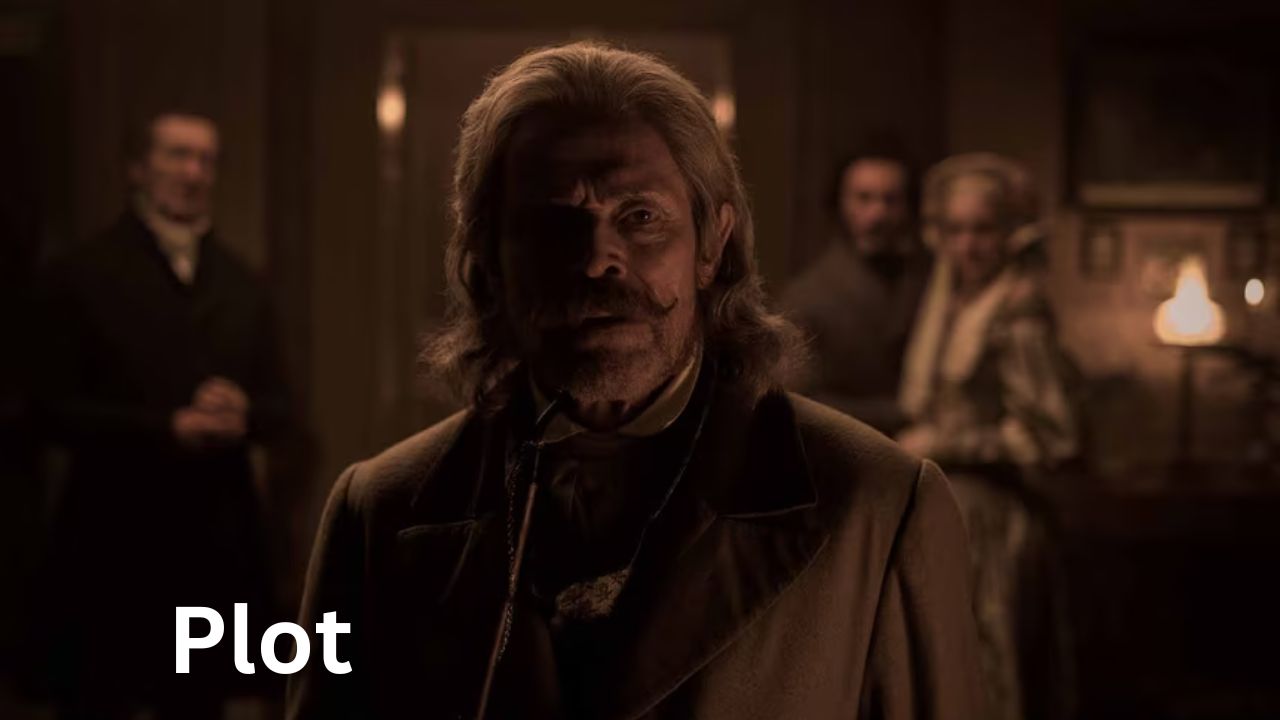
Thomas returns just as Orlok arrives, bringing a deadly plague. Knock helps Orlok move into his new mansion, while Orlok frightens Ellen in her dreams, threatening to ruin Wisborg unless she confirms their past agreement. When Orlok kills Friedrich’s family, Ellen realizes that only her sacrifice can stop the vampire. Von Franz misleads Thomas and Sievers with a fake plan to destroy Orlok’s coffin. Ellen lets Orlok drink her blood, keeping him busy until morning. As the sun rises, Orlok turns to dust, and Ellen, wounded, dies a hero, saving Wisborg from darkness.
Nosferatu (2024) Full Movie Explanation: Shadows of Horror and Beauty
Director Robert Eggers’ new version of Nosferatu is a horror masterpiece made from shadows, blood, decay, and nightmares. This remake of F.W. Murnau’s 1922 silent film keeps the eerie feel of the original but adds a fresh, modern twist. Eggers, known for his detailed storytelling and stunning visuals, creates a film that combines fear and terror into a memorable story.
A New Chapter in Horror Legacy
Eggers faces a tough task—he is adapting Murnau’s famous silent movie and Bram Stoker’s Dracula, which inspired it. Even with high expectations, the film shows strong confidence and provides a scary yet polished horror experience. Eggers uses his unique style to build a feeling of discomfort throughout the story. Everything, from the acting to the visuals, adds to a growing sense of fear that feels both certain and really engaging.
A Faithful Yet Fresh Narrative
The story stays true to Stoker’s book and connects to Murnau’s 1922 movie but adds its own twists. Eggers pays less attention to the plot details and more to the overall feel, using this famous story to dive into deeper ideas about fear and how people fight against the supernatural. The outcome is a film that blends style and meaning, drawing viewers into a spooky world.
Visual Minimalism Meets Atmospheric Realism
Murnau’s original film drew from German Expressionism, but Eggers takes a simpler, realistic route. His Nosferatu focuses on strong images like faces lit by flickering flames, plain rooms, and dark landscapes. These choices create a unique atmosphere, making the horror feel real in 19th-century Germany. Jarin Blaschke’s cinematography enhances the visuals with moonlight and candlelight, mixing cool blues and warm oranges. This lighting resembles the old silent films, pulling the audience into a space between real life and nightmares. This idea matches the film’s themes, as characters deal with the line between life and death, human and monster.
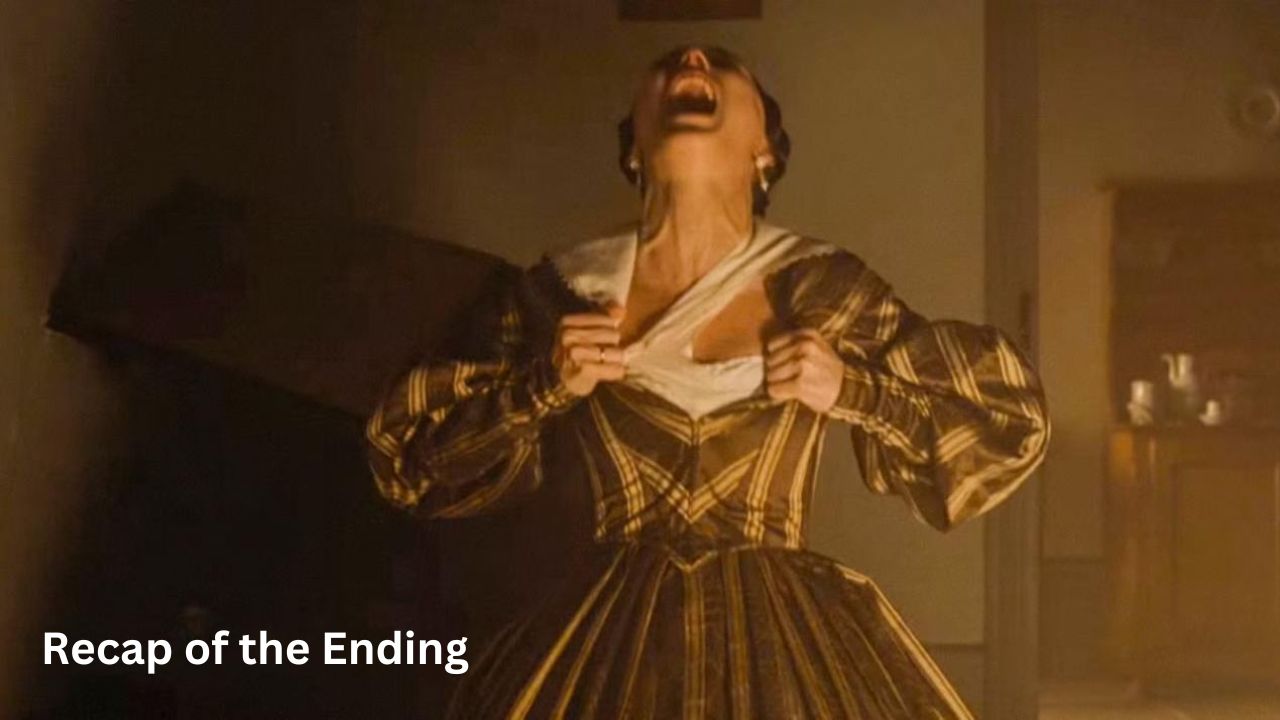
The Story Unfolds
The story starts with Ellen Hutter (Lily-Rose Depp), a young woman caught between her love for her husband Thomas (Nicholas Hoult) and a feeling of danger looming over her. Ellen’s real-life wishes clash with strange forces around her, making her both weak and interesting. Depp shines in her role, showing Ellen’s lively spirit and quiet strength. Thomas needs to complete a mysterious land deal, so he goes to the Carpathian Mountains, where he meets the mysterious Count Orlock (Bill Skarsgård). His trip is filled with scary stories, ghostly sightings, and rising fear. By the time Thomas arrives at Orlock’s castle, the movie’s tension has become intense.
Orlock is a fascinating character. Skarsgård plays him with a spooky presence, showing the vampire as both noble and ugly. Orlock’s rotting look—marked by dry skin and moving maggots—clashes with his strong presence. He moves in strange ways, his voice is threatening, and he seems caught between life and death. Eggers uses Orlock’s scary face to represent the decay and corruption that come with his endless curse.
The Plague and the Descent Into Chaos
When Orlock reaches Germany, he brings death and disease. Dark shadows loom over the town of Wisborg, filled with sounds of sorrow and fear. The vampire’s arrival changes everything, pushing the quiet town into disorder. Ellen’s link to Orlock grows stronger, tying her fate to the old evil that wants to take over her life.
Supporting characters enrich the story. Simon McBurney’s Mr. Knock, who works for Thomas, unknowingly falls under Orlock’s control and goes crazy as the vampire comes. At the same time, Ralph Ineson and Willem Dafoe’s roles, Dr. Sievers and Prof. von Franz, take different paths to fight the supernatural danger. Their views—scientific and mystical—highlight the movie’s theme of reason against the unknown.
A Climax of Terror
The film builds to a gripping climax as Thomas and Ellen confront Orlock in a desperate bid to save themselves and their town. The final confrontation is both intimate and epic, blending personal sacrifice with the larger battle against an ancient evil. Eggers’ direction ensures every moment resonates, making the conclusion both satisfying and haunting.
A Triumph of Modern Horror
Eggers’ Nosferatu is not just a new version; it’s a fresh take that respects the original films while standing on its own. By emphasizing mood, visuals, and deep themes, Eggers makes a movie that goes beyond regular horror. It shows how horror can tackle big ideas and stir strong feelings.
Connection to Other Movies
Robert Eggers’ Nosferatu (2024) invokes a very wide-ranging cinematic inheritance from the classics to modern horror films, wherein the wind could well consist of an eerily supernatural strand that strums The Exorcist (1973), the same old, same old with regard to topics of possession, sacrifice, and the psychological effects brought about by combat with malignancy. Like The Exorcist, this Nosferatu develops a narrative that delineates fear from profound emotional stakes and induces profoundly moving extreme terror in the audience.
Gothic in aesthetic and narrative, such Nosferatu aligns with Dracula (1931), the very foundation of vampire cinema. They share in common that incandescent thrill of gothic horror that engenders brooding castles, atmospheric lighting, and the ageless tension between innocence and corruption-in between these themes, Eggers paves the way through psychological layers of Ellen’s self-struggles and also her psychic link with Orlok so that, old but still fresh feel to the story.
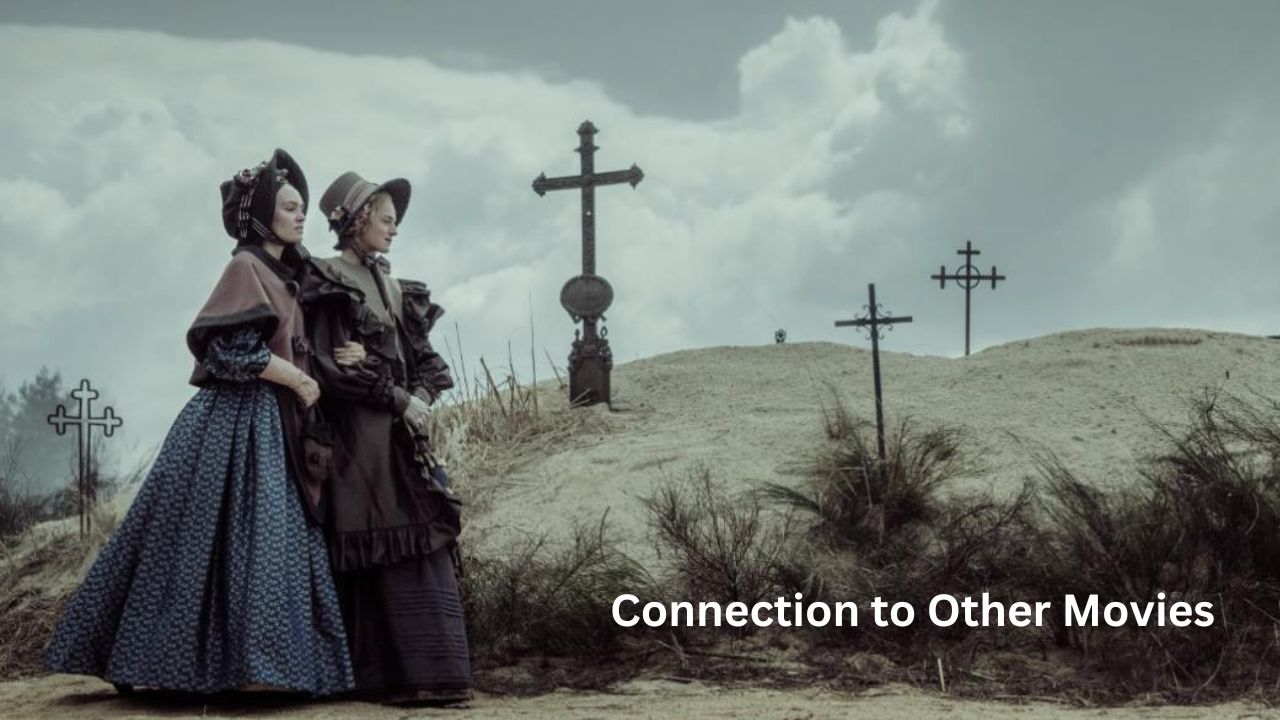
Being remarkable in signature, Eggers’ work marries Nosferatu to the previous history in general with The Witch (2015). The historical scrupulousness of detail comes through in both films and enveloped into worlds filled with dread. Isolation, an overcoming fear of the unknown, and struggle show the battle between what the human spirit can put forth and supernatural forces are threads that run through both stories.
Expansively, Nosferatu (2024) can be part of modern retellings of the early horror-adapted classics like Bram Stoker’s Dracula (1992) and Crimson Peak (2015), as it transforms gothic horror through visual splendor and emotional weight. Eggers’ film respects heritage and crafts its own space by mixing psychological depth into fearsome visuals.
Nosferatu (2024) finally earned itself the title of linking past with present by celebrating honors from the classics yet redefining what may be a vampire tale in the modern context of cinema. Since its ties are both to the masterpieces of horror itself and the peculiar filmography of Eggers, it qualifies as one of the newest standards for gothic storytelling.
Budget and Income
In the U.S. and Canada, Nosferatu came out with A Complete Unknown, Babygirl, and The Fire Inside. It was expected to make about $25 million from 2,600 theaters in the first five days. After earning $11.55 million on the first day, the weekend estimate went up to $42 million.
Punchy News and Criticism
On Rotten Tomatoes, 87% of 188 critics gave positive reviews, with an average score of 8.3 out of 10. The site’s consensus says: “Director Robert Eggers masterfully creates Nosferatu, a horror film that is both disgusting and alluring.” Metacritic gave the film a score of 78 out of 100 from 49 critics, showing “generally favorable” reviews. Audiences surveyed by CinemaScore rated it a “B–” on an A+ to F scale. David Rooney from The Hollywood Reporter praised the direction, script, and acting, calling the film “exciting, disgusting, and beautiful,” adding that it is thrilling because it builds and holds tension, making it deeply scary. David Ehrlich from IndieWire also praised the direction and highlighted Depp’s performance, stating that like all of Eggers’ films, Nosferatu finds its captivating power from the clash between old societal norms and the timeless human desires they try to contain.
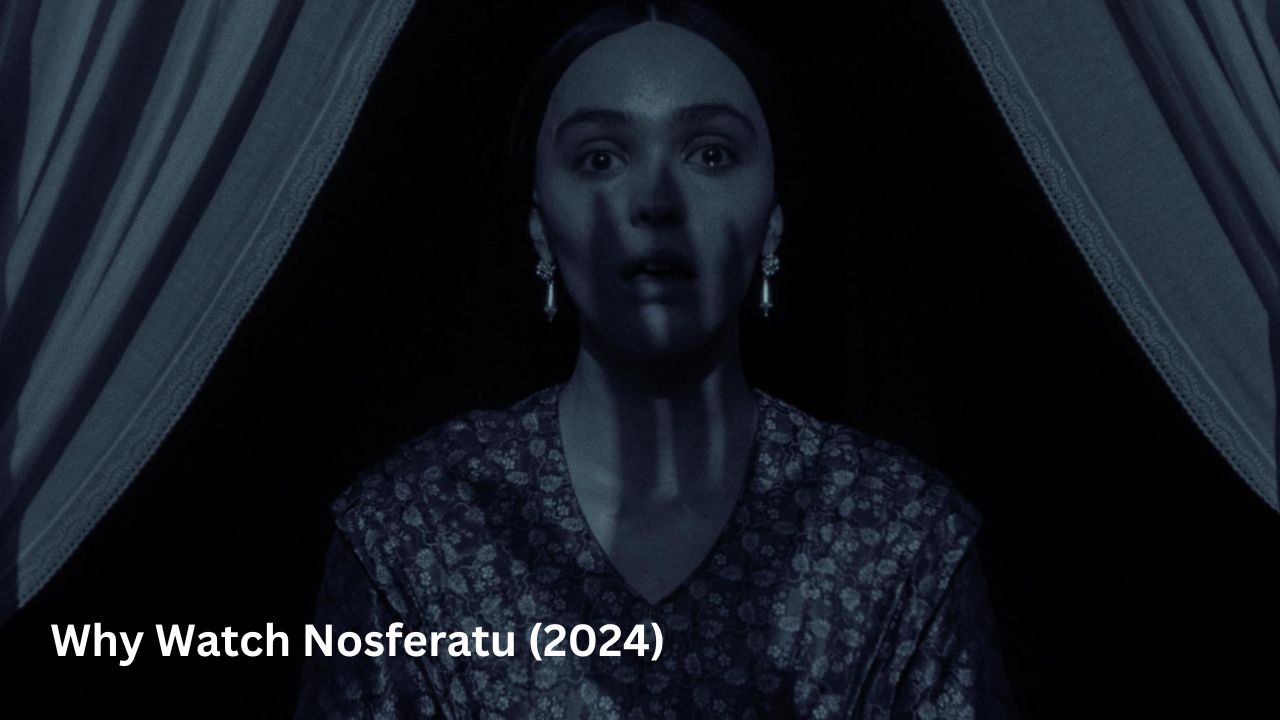
Ratings
- Rotten Tomatoes: 87%
- Metacritic: 78/100
- IMDb: 7.9/10
- Joymahidul’s Rating: 4.5/5
Why Watch and Recommend Nosferatu (2024)
For those who crave gothic horror or cinematic masterpieces, Nosferatu (2024) is definitely an experience you cannot afford to miss. Directed by Robert Eggers, this film edits out the classic 1922 to bring its own haunting psychological depth, chilling visuals, and emotionally rich storytelling.
An outstanding cast brings to life the tale of Count Orlok’s obsession with Ellen Hutter, with Bill Skarsgård turning in a skin-crawling performance as the ancient vampire and Lily-Rose Depp enchanting audiences as Ellen, the flick’s emotional core. Every frame, from shadowy castles to eerie landscapes, immerses you in its gothic world.
I highly recommend watching this movie to experience the perfect balance of horror, artistry, and storytelling. Ready to step into the shadows and embrace the fear? Watch Nosferatu (2024) now through this link on joymahidul.com and join the conversation about one of the most visually stunning films of the year. Don’t forget to share your thoughts in the comments and become part of our community of movie lovers!
FAQs about Nosferatu (2024)
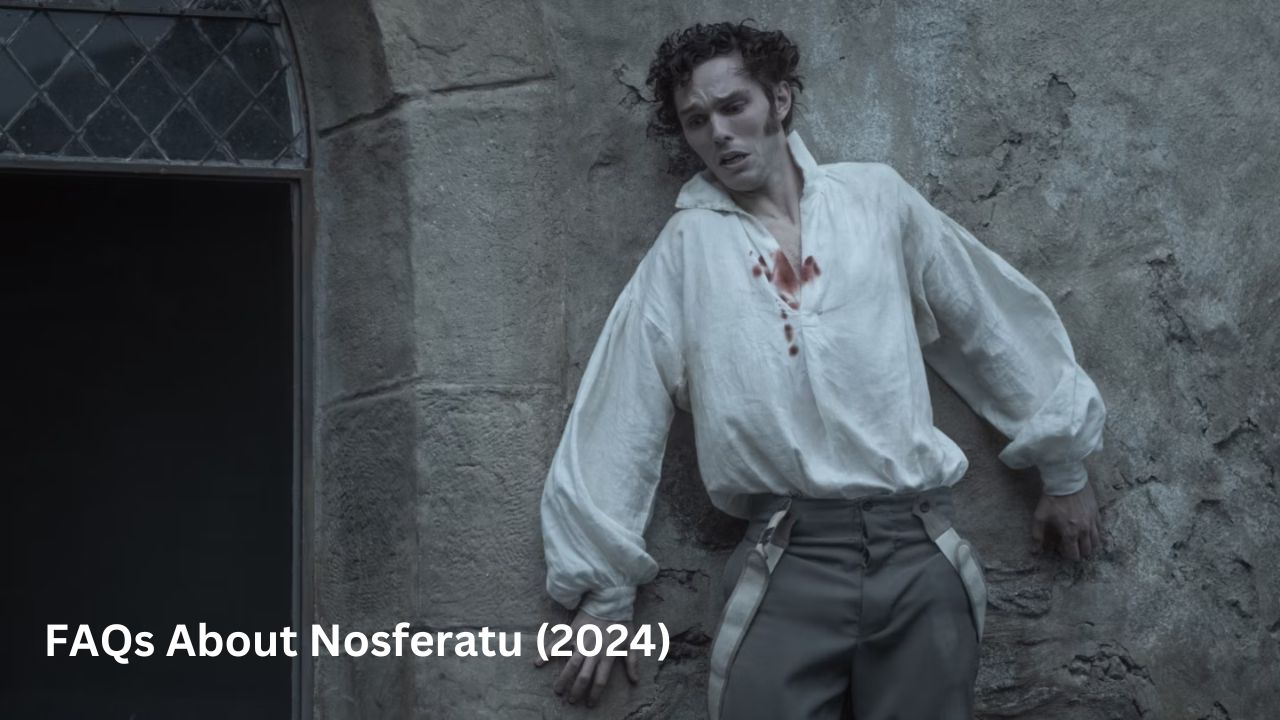
- What is Nosferatu (2024) about?
Nosferatu (2024) tells the story of Count Orlok, an ancient vampire, and his obsessive pursuit of a young woman, Ellen Hutter, in 1838 Germany. The film explores themes of love, sacrifice, and the supernatural through gothic horror and psychological tension. - Is Nosferatu (2024) a remake?
Yes, it is a remake of the 1922 silent classic Nosferatu: A Symphony of Horror, directed by F.W. Murnau. Robert Eggers reimagines the tale with a modern cinematic style while retaining its gothic essence. - Who plays Count Orlok in Nosferatu (2024)?
Bill Skarsgård portrays Count Orlok, delivering a chilling performance that captures the vampire’s grotesque and menacing nature. - What makes Nosferatu (2024) different from the original?
While the original focused on shadowy suspense, Eggers’ version delves deeper into the emotional and psychological aspects of Ellen’s character, offering a fresh perspective on the classic story. - Is Nosferatu (2024) scary?
Yes, the film blends atmospheric horror with psychological tension, creating a chilling experience. The haunting visuals, eerie music, and unsettling performances contribute to its fear factor. - Where was Nosferatu (2024) filmed?
The movie was primarily shot in the Czech Republic and Romania, with locations like Barrandov Studios and Corvin Castle adding authenticity to its gothic setting. - Who is the director of Nosferatu (2024)?
Robert Eggers, known for films like The Witch and The Lighthouse, directed Nosferatu (2024). His signature style emphasizes historical accuracy and atmospheric horror. - Is Nosferatu (2024) faithful to the original?
The film retains the core elements of the 1922 classic but expands on the story, particularly Ellen’s role, adding emotional depth and modern storytelling techniques. - What themes does Nosferatu (2024) explore?
The movie delves into themes of obsession, sacrifice, love, mortality, and the corrupting power of evil. - What is Ellen’s role in the story?
Ellen, played by Lily-Rose Depp, is the emotional center of the film. Her psychic connection to Orlok and her ultimate sacrifice to save her town make her a compelling and heroic character. - Why does Count Orlok travel to Wisburg?
Orlok becomes obsessed with Ellen after seeing her portrait and travels to Wisburg under the guise of acquiring property, leaving destruction in his wake. - What is the significance of the plague in Nosferatu (2024)?
The plague represents Orlok’s destructive influence, spreading death and chaos wherever he goes. It symbolizes the vampire’s corrupting power over both individuals and society. - How does Nosferatu (2024) end?
Ellen sacrifices herself to distract Orlok until sunrise, using her psychic connection to weaken him. As the sun rises, Orlok disintegrates into ash, and Ellen’s selflessness saves her town but costs her life. - What is the runtime of Nosferatu (2024)?
The film has a runtime of approximately 2 hours and 10 minutes. - What is the film’s rating on Rotten Tomatoes?
Nosferatu (2024) currently holds a 93% rating on Rotten Tomatoes, indicating widespread critical acclaim. - Is Nosferatu (2024) suitable for all audiences?
The film is rated R for its intense horror themes, violence, and unsettling imagery, making it more suitable for mature audiences. - Does the movie feature jump scares?
While there are moments of sudden tension, Nosferatu (2024) relies more on atmospheric horror and psychological unease than traditional jump scares. - What role does music play in the film?
The haunting score, composed by Robin Carolan, enhances the film’s eerie atmosphere and emotional depth. The music is an integral part of the storytelling. - How is Count Orlok portrayed visually?
Orlok’s grotesque appearance is achieved through extensive prosthetics and makeup. His elongated features, sunken eyes, and eerie movements create a deeply unsettling presence. - Why should I watch Nosferatu (2024)?
The film offers a captivating blend of gothic horror, emotional storytelling, and stunning visuals. Whether you’re a fan of the original or new to the story, Nosferatu (2024) is a cinematic experience that stays with you long after the credits roll.
This list covers key aspects of Nosferatu (2024), addressing popular questions and making it a helpful resource for fans and newcomers alike.
Conclusion
Enter the beautifully haunting world of Nosferatu (2024), where gothic horror is emotionally told. The interpretation is that of Robert Eggers, and it takes you through shadow and dream, capturing the viewer in a most terrifying yet unforgettable experience. With illustrious performances by Bill Skarsgård, Lily-Rose Depp, and Nicholas Hoult, the film weaves the tale of love, sacrifice, and the eternal battle between light and dark.
Atmospheric horror lovers or those fresh to the thrill will want to catch this Nosferatu (2024). Visually stunning and hauntingly scored with a complex narrative, the film is art well married to fear. If you liked the gothic appeal of Dracula or the psychological depth of The Witch, this is a modern but faithful entry into the horror lexicon.
We want to know how it went down after viewing. Ellen’s sacrifice- did that touch you? Did Orlok’s disturbing element give you the chill? Fill us in on that experience in the comments and join in with your fellow fans.
Take the plunge into darkness—Nosferatu (2024) awaits. Click the link, watch the movie, and let the gothic spell take hold!
